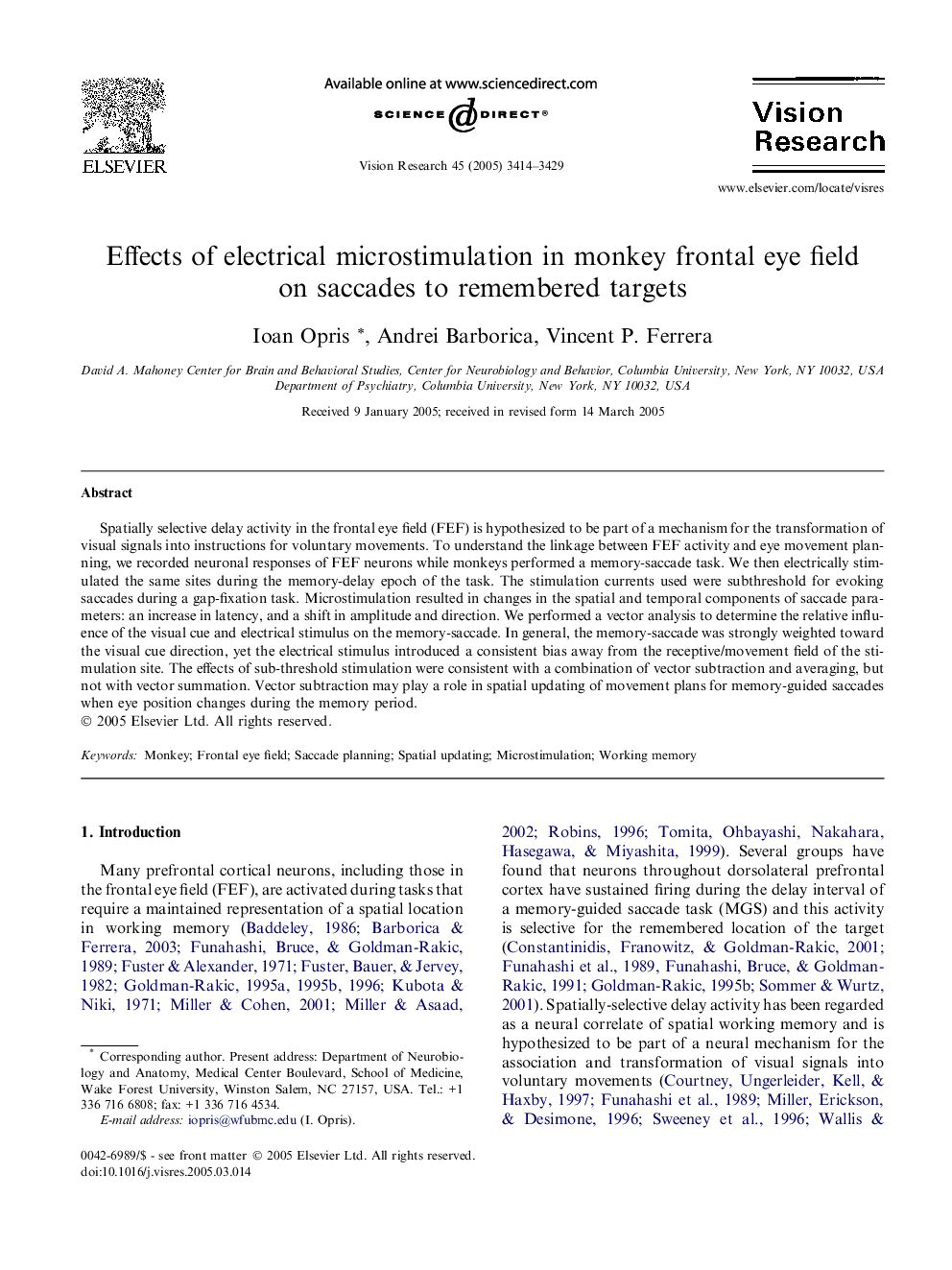| Article ID | Journal | Published Year | Pages | File Type |
|---|---|---|---|---|
| 4035472 | Vision Research | 2005 | 16 Pages |
Spatially selective delay activity in the frontal eye field (FEF) is hypothesized to be part of a mechanism for the transformation of visual signals into instructions for voluntary movements. To understand the linkage between FEF activity and eye movement planning, we recorded neuronal responses of FEF neurons while monkeys performed a memory-saccade task. We then electrically stimulated the same sites during the memory-delay epoch of the task. The stimulation currents used were subthreshold for evoking saccades during a gap-fixation task. Microstimulation resulted in changes in the spatial and temporal components of saccade parameters: an increase in latency, and a shift in amplitude and direction. We performed a vector analysis to determine the relative influence of the visual cue and electrical stimulus on the memory-saccade. In general, the memory-saccade was strongly weighted toward the visual cue direction, yet the electrical stimulus introduced a consistent bias away from the receptive/movement field of the stimulation site. The effects of sub-threshold stimulation were consistent with a combination of vector subtraction and averaging, but not with vector summation. Vector subtraction may play a role in spatial updating of movement plans for memory-guided saccades when eye position changes during the memory period.
